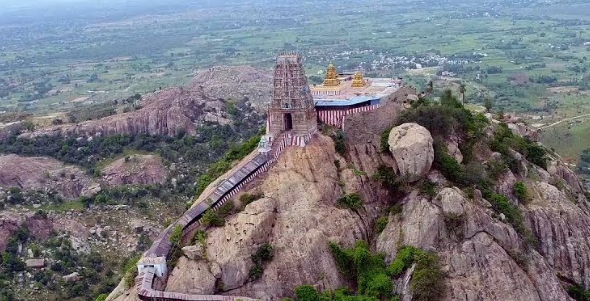The Sri Yoga Narasimha Swamy Temple in Sholingur has a rich historical background, believed to have been constructed between the 6th and 8th centuries by the Chozhas, when the area was known as Chozha Simhapuram. The temple's sanctum sanctorum is carved directly into a rock, and it does not follow traditional architectural elements such as upana or adhisthana. The projections of the natural rock are visible on all three sides of the sanctum, and the prakaram (outer courtyard) is relatively empty. The pillars in the temple are cylindrical, supported by simple Pallava or Chozha period style capitals, with some featuring lotus medallions.
Legends :
According to Puranas and literature, this temple is known as “Thirukkadigai,” meaning the Narasimha who grants darshan (divine vision) for 24 minutes. It is believed that staying in this sacred place for 24 minutes can lead to liberation from the cycle of birth and death, hence the name Kadikachalam.
The temple is also associated with several revered figures. It is said that Sri Lakshmi, Brahma, Viswamitra, Budhan, and Valmiki worshipped Yoga Narasimha here. Viswamitra, after worshipping Sri Narasimha, is believed to have achieved the status of Brammarishi.
Devotees believe that worshipping Lord Yoga Narasimha at this temple can provide relief from psychological issues and other ailments.
